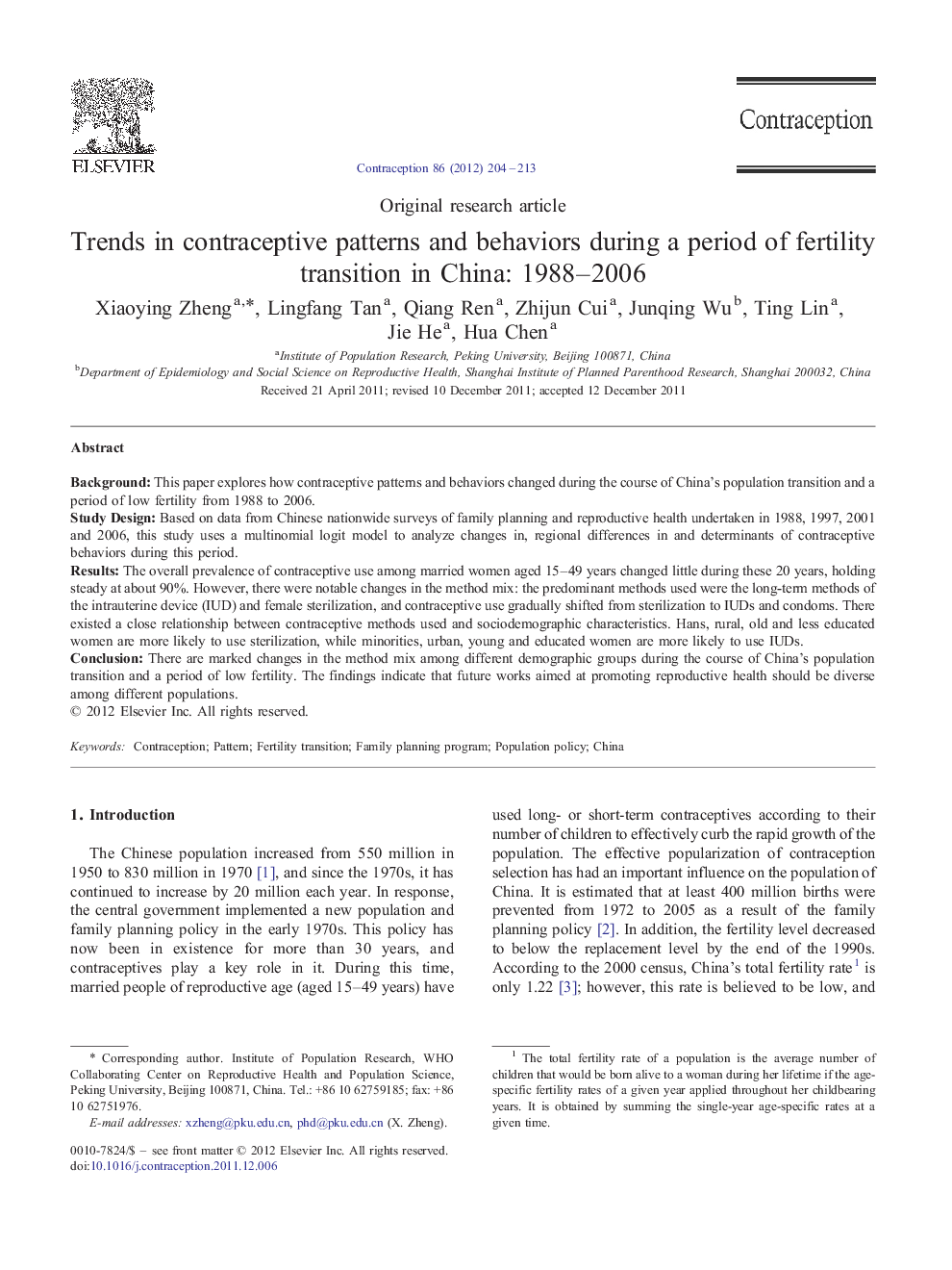| Article ID | Journal | Published Year | Pages | File Type |
|---|---|---|---|---|
| 3913851 | Contraception | 2012 | 10 Pages |
BackgroundThis paper explores how contraceptive patterns and behaviors changed during the course of China's population transition and a period of low fertility from 1988 to 2006.Study DesignBased on data from Chinese nationwide surveys of family planning and reproductive health undertaken in 1988, 1997, 2001 and 2006, this study uses a multinomial logit model to analyze changes in, regional differences in and determinants of contraceptive behaviors during this period.ResultsThe overall prevalence of contraceptive use among married women aged 15–49 years changed little during these 20 years, holding steady at about 90%. However, there were notable changes in the method mix: the predominant methods used were the long-term methods of the intrauterine device (IUD) and female sterilization, and contraceptive use gradually shifted from sterilization to IUDs and condoms. There existed a close relationship between contraceptive methods used and sociodemographic characteristics. Hans, rural, old and less educated women are more likely to use sterilization, while minorities, urban, young and educated women are more likely to use IUDs.ConclusionThere are marked changes in the method mix among different demographic groups during the course of China's population transition and a period of low fertility. The findings indicate that future works aimed at promoting reproductive health should be diverse among different populations.
